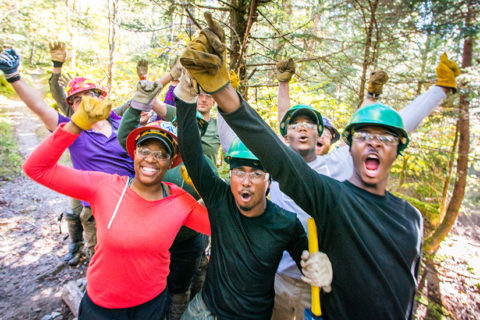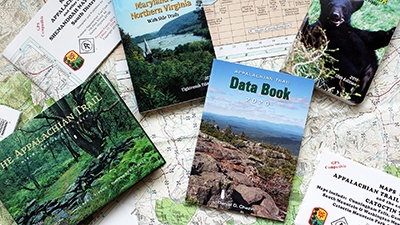by Sean Kurth, Volunteer Impact Coordinator - Fall 2021
Engaging Gen Z Volunteers
For a while now, many people point to one generation when we think about young people: the Millennials. However, the last Millennial was born in 1996 and is now 25 years old. The oldest is pushing 40. Millennials aren’t kids anymore – they’re building their careers, and many have started families or bought homes.
If we hope to engage with young volunteers today, we need to answer an important question: who are they? That would be Generation Z. Where internet access was still reaching rural areas when I was in high school (I’m in college now), most high school students are now assigned homework to do online 1. Where smartphones were toys for most of my childhood, Gen Z has never known a world that doesn’t run on them.
The news on Gen Z volunteering is good: it’s a generation that wants to act for positive change in the world. 67% have taken direct action in the past year for a large number of causes2, such as anti-corruption, refugee resettlement, anti-racism, and confronting climate change. They don’t yet vote or donate much, but they’re more than happy to lend their voices and their time3.
Gen Z clearly has a strong belief that they have the responsibility to improve the world, and a proven willingness to take action. But what do they want out of volunteering? And will the cause of conserving and maintaining the Appalachian Trail (A.T.) inspire them to act?
Gen Z’s unprecedented diversity means their motivations are just as diverse as they are: Black or Latino individuals are more likely to seek out organizations with missions and strategies they support, while white people tend to respond better to recruitment. Latinos are 9% more likely than all adults to believe they can have a big impact on their community4.
Gen Z differs from those that came before in other key ways as well: the top four issues that concern them in civic engagement and community volunteering are mental health, poverty, the environment, and racism. The proportion of individuals listing racism as their top issue is 10% higher than the general population, the environment 5% higher, poverty 7% higher, and mental health a remarkable 21% higher5. In fact, a majority – 52% – of Gen Z feel the most important thing about their engagement is that it improves the mental health of themselves and others6.
Previous generations, typically, were reached by promoting environmental, recreational, or community improvement aspects of Trail volunteering. Of course, Gen Z cares about these aspects and wants to pursue them. In fact, 76% of Gen Z say it’s important to see the results of their actions with their own eyes, vs 70% of all adults7.
Still, Gen Z is defined by feeling more strongly about mental health and anti-racism than did previous generations. An experience Gen Z will sign up for and enjoy must emphasize the proven mental health benefits of being in nature, social interaction, and doing work that feels meaningful.
Reaching Gen Z with these messages requires new approaches: they use a vast array of social media platforms, which support different cultures and content types. 72% of Gen Z see social media as their primary way to learn about and discuss issues, as opposed to 57% of all adults8.
Millennials used Facebook, Instagram, and Snapchat. On those platforms, best practices, graphic design standards, and methods to encourage sharing are established. However, the Gen Z social media landscape is much more fragmented:
- They use Snapchat even more, often as a total replacement for text messaging.
- They rarely use Facebook, except to look up and register for events. In fact, an organization whose primary online presence is a Facebook group may be seen by Gen Z as outdated and difficult to work with.
- They use Instagram differently than Millennials, often seeing and engaging with stories more than posts.
- They revived Tumblr9.
- They create and share videos on Tiktok, where viral fads (known as challenges) can last for weeks and inspire action from millions of people.
There are many effective ways to reach Gen Z. There’s no need to reach out on all of these channels; an organization can pick and choose. However, they are all very different in terms of demographics, content, and culture. Social media outreach and techniques must diversify in order to meet Gen Z’s expectations. Outreach on these new platforms will be most successful by young, digital natives who have experience creating content on them.
Simply reading an event announcement on Tiktok or sharing an Instagram infographic in a Snapchat story is unlikely to accomplish much. Traditional advertising also won’t work well: over half of Gen Z users block website ads, and over 80% skip video ads10. However, if we can ride this demographic wave with outreach efforts Gen Z will see and engage with, the 2020s could see a renaissance in youth volunteering.
References
1. Wong, Alia. “Why Millions of Teens Can’t Finish Their Homework.” The Atlantic, Atlantic Media Company, 30 Oct. 2018, https://www.theatlantic.com/education/archive/2018/10/lacking-internet-millions-teens-cant-do-homework/574402/.
“2020 Points of Light Civic Engagement Research Topline Report.” Points of Light, Points of Light, 2020, https://www.pointsoflight.org/civic-engagement-research/
2. p. 13
3. p. 11
5. p. 12
7. p. 13
8. p. 13
“2020 Points of Light Civic Engagement Research Brief.” Points of Light, Points of Light, 2020, https://www.pointsoflight.org/civic-engagement-research/
4. p. 13
6. p. 7
10. “Advertising to Gen Z: How Marketers Can Avoid Being Disruptive.” Gen Z Insights, UNiDAYS, 17 June 2021, https://www.genzinsights.com/the-rise-of-affinity-networks-why-marketers-need-to-engage-gen-zers-with-non-disruptive-ads.-.
9. Chayka, Kyle. “How Tumblr Became Popular for Being Obsolete.” The New Yorker, Conde Nast, January 14, 2022. https://www.newyorker.com/culture/infinite-scroll/how-tumblr-became-popular-for-being-obsolete





